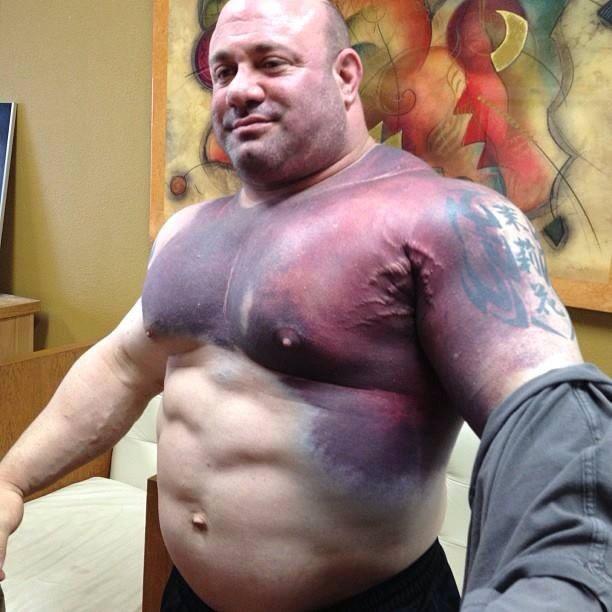Sport and exercise are an essential part of staying healthy. Not only does exercising bring enjoyment but it is also a proven preventative measure against many health problems – diabetes included.
For people with diabetes, exercise has been continuously proven to help improve blood glucose control and subsequently prevent some of the secondary health problems associated with diabetes. Monitoring your blood glucose levels is a crucial aspect of living a healthy life with diabetes, but it can also have a substantial effect on your return to exercise if you have been injured.
If you play sport or exercise regularly, there is a possibility you will get injured.
Let’s face it you’re not superman or superwoman. At some stage in your training career, you will get injured. Injuries occur for a multitude of reasons. It may stem from a performing a repetitive movement over an extended period. In athletes, it may be because of a nasty tackle, too sharp a turn or nasty fall. For a regular gym goer, it could be because of a poorly taught exercise or because you have just pushed yourself too fast, too soon. Athletic injuries are usually musculoskeletal in nature, in that they occur in the soft tissues – muscles, ligaments, tendons – or bone and joints. Occasionally injuries can happen to the nervous system, but this is rare.
It doesn’t matter what the cause, injury forces us to rest, heal up and rehabilitate. Generally speaking, the burden of injury and recovery can be challenging both physically and mentally for people with and without diabetes.
The three stages of injury and recovery:
- Inflammatory Phase: Soon after injury – sometimes immediately – and depending on the exact cause of damage, the body encourages clotting around wound sites, sends antibodies and white blood cells to fight infection, and provides nutrients, enzymes and oxygenated blood to begin the early stages of the repair process. These various processes lead to heat, swelling and, of course, pain.
- Proliferation Phase: New blood vessels form and deliver further nutrients to the damaged tissues for repair. The newly formed granular tissue and collagen fibres replace damaged tissue and keep the injured site “strong”.
- Remodelling/Maturation Phase: The collagen fibres during the proliferation phase aren’t robust enough to put up with the stresses of normal exercise. To increase tissue strength collagen integrates itself along the lines of force/tension to protect weaker areas of tissue that may be susceptible to repeat injury.

Diabetes and Sports Injury Risk
The human body needs adequate rest, nourishment and specific rehabilitation exercise to recover properly. People with diabetes must ensure blood glucose levels are controlled tightly for a full speedy recovery.
Fact: Hyperglycemia causes cell injury.
The effects of hyperglycemia on delaying healing and injury recovery are complicated and well beyond the scope of this short article.
However, one of the most damaging processes is an abnormal increase in advanced glycation end products (AGEs). In layman’s terms, this is when normal protein and lipid (fat) molecules bind to sugar, via a process called glycation. Glycation accelerates when these molecules are overexposed to sugar, especially during hyperglycemia.
A prime example would be when glucose molecules attach to the haemoglobin protein in red blood cells. The longer hyperglycemia occurs in blood, the more glucose binds to haemoglobin in the red blood cells and the higher the glycated haemoglobin. An A1C blood test assesses the percentage of glycated red blood cells in an individual’s circulation.
Once a haemoglobin molecule is glycated, it remains that way.
AGEs can also be introduced into the body via modern day food processing methods such as dry heat(1) or during tobacco smoking(2).
AGEs are well established to contribute to a variety of microvascular and macrovascular complications(3) and play a fundamental role in the complications of diabetes by raising intracellular oxidative stress.
In Layman’s terms,
Sugar makes things sticky.
A simple analogy would be to consider high blood glucose like drinking a milkshake through a straw. On the other hand, normal blood glucose levels (normoglycemia) would resemble drinking a glass of water.
Which fluid would be more challenging to sip through the straw?
The milkshake obviously.
This kind of analogy resembles what happens in the cardiovascular systems of arteries, veins and capillaries when blood glucose levels are high. The blood becomes a slower moving, sticky substance.

With this, you have a less efficient delivery of all the essential components of recovery. Blood cannot get to where it needs to be as quick as it is needed. Not only do we see a slower delivery of nutrients, antibodies, enzymes, etc. but there is also a less efficient removal of waste product from recovering body tissues: dead cells, lactic acid, inflammatory markers and more 5,6,7.
In the same way, cholesterol can is deposited around the body, so too can sugar. Research has shown that chronic hyperglycemia glucose can slow collagen formation around damaged areas of tissue, which increases the potential for re-injury and further damage 5,6,7.
Take Home
The benefits of exercise for people with diabetes are plentiful. However, there is a chance of getting injured. If you do experience an injury, your blood glucose control plays a significant role in determining how quickly you recover and get back in the gym.
Here are three super important tips to implement the next time you’re injured.
- Invest in a Continuous Glucose Monitor (CGM.) to monitor blood glucose levels 24/7 with ease. You’ll be able to catch and treat hyperglycaemia faster than normal.
- Unless you are completely debilitated exercise areas of your body that aren’t injured. If your lower body’s injured train your upper body, and vice versa. Sitting on your ass all day isn’t going to do you any favours, and in most cases worsens blood glucose control, adds body fat and leaves you feeling like crap. Do what you can.
- Be mindful that your energy expenditure won’t be as high. To avoid fat gain, make appropriate adjustments to your diet and physical activity.
References
- Koschinsky T, He CJ, Mitsuhashi T, Bucala R, Liu C, Buenting C, Heitmann K, Vlassara H. Orally absorbed reactive glycation products (glycotoxins): an environmental risk factor in diabetic nephropathy. J Biol Chem. 1989 Mar 5; 264(7):3674-9.
- Cerami C, Founds H, Nicholl I, Mitsuhashi T, Giordano D, Vanpatten S, Lee A, Al-Abed Y, Vlassara H, Bucala R, Cerami A Tobacco smoke is a source of toxic reactive glycation products.Proc Natl Acad Sci U S A. 1997 Dec 9; 94(25):13915-20.
- Goldin et al. Advanced Glycation End Products Sparking the Development of Diabetic Vascular Injury. Circulation. 2006;114:597-605
- Biochemistry and molecular cell biology of diabetic complications. Brownlee MNature. 2001 Dec 13; 414(6865):813-20.
- Wyatt, LH and Ferrance, RJ., 2006. The musculoskeletal effects of diabetes mellitus. The Journal of the Canadian Chiropractic Association.
- Levinger I, Seeman E, Jerums G, McConell GK, Rybchyn MS, Cassar S, Byrnes E, Selig S, Mason RS, Ebeling PR, Brennan-Speranza TC., 2016. Glucose-loading reduces bone remodeling in women and osteoblast function in vitro. Physiological Reports.
- Bhat TA, Dhar SA, Dar TA, Naikoo MA, Naqqash MA, Bhat A and Butt MF., 2016. The Musculoskeletal Manifestations of Type 2 Diabetes Mellitus in a Kashmiri Population. International Journal of Health Sciences.

